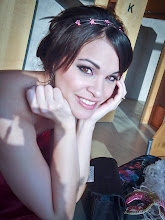Scrapbooking 101
Are you unsure about where and how to begin scrapbooking? Do you feel overwhelmed by all of the tools and embellishments available? Let me help dispel these concerns. The following is a brief overview of typical supplies and materials. Clicking on the links will take you to that particular product on my Memory Works website.
Let's begin!
ALBUMS AND PROTECTORS:
An album lets you safely store and display your finished layout. There are many forms of albums that range in size and the way it is bounded. Traditionally scrapbook pages are 12" x 12" or 8.5" x 11", but there are smaller variations as well. Two typical types of scrapbooks are:
1.) Three Ring: This is similar to a school binder with it's 3 metal rings that hold page protectors in place. Adjusting pages in the 3 ring album is easier than the post bound.
2.) Post Bound: In a bost bound album, two or three screw/bolt like posts hold pages in place. To rearrange your pages or add more protectors, you have to dismantle the album. It is not difficult, just a bit more time consuming versus the 3 ring.
Protecting your finished layouts from fingerprints, tearing, or breaking apart you are going to need an album that features clear page protectors. These are standard in most albums, but not all. If your album does not have them, you can purchase them seperately. Also, like anything you use, your protectors need to be PVC free (polyvinyl chloride) which is harmful to photographs. If your page protector smells like a vinyl shower curtain, don't use it!!
ADHESIVE (GLUE)
Adhesive is available in many styles and what you need depends on what you are doing. Some of the most important things to remember are that your glues are nontoxic, acid free, must not discolor over time, or have an odor once dry. If you use a glue with these things, you risk the chance of ruining your photographs and scrapbook pages over time. Here are a few suggestions regarding glue:
- Glue Sticks: For things like matting, I generally use a gluestick. Some people claim that glue sticks do not work, but for everyday projects, I have not had an issue with them. Team it up with a brayer for even application and to get the bumps out.
- Glue Pen: A glue pen is great when you are gluing many small objects or embellishments.
- Bottled Glue: A liquid glue that is distributed through the narrow tip. Works well with small embellishments as well.
- Glue Dots: These are great for a three-dimensional feel to your layouts. They come in a variety of sizes, textures, are permanent, and most imporantly, easy to work with. I prefer using glue dots on projects that are not protected with a protector sheet or will be handled alot by individuals.
- Tape Dispensers: Tape dispensers are my favorite to work with simply because they are fast and permanent (although a reversable type is available if you make mistakes). Some are a refillable as well.
CARDSTOCK
Cardstock is the foundation for your photographs or layouts because it is thicker than regular paper. The two basic types of cardstock are textured or non-textured and it comes in hundreds of colors. It also tends to be the most affordable. I suggest, for the beginner, stocking up on the whites, blacks, and neutrals. Memory Works sells various textured color packs that have one main color with three different tones (for example: light blue, medium blue, and dark blue).
PATTERNED PAPER:
Sometimes coordinating the print on patterned paper can be overwhelming and time consuming. The great thing about Memory Works is that they put together paper lines to take the guesswork out of scrapping. The important things is to pick a style you are comfortable with. Some brands have a distressed feel (Basic Grey, Cosmo Cricket), some are bring a vintage feel (My Mind's Eye), or there is the bold graphic feel (American Crafts, Doodlebug). Alot of paper is now printed on both sides.
SCISSORS, TRIMMERS, AND KNIVES
I suggest all scapbookers have both large scissors and small scissors. The larger scissors will allow you to cut papers and embellishments while the smaller allows cutting of finer detailed projects. It is also imporant that your scissors stay sharp and clean. There is nothing more frustrating than a pair of scissors that won't cut properly!
A trimmer is a great tool to have because it makes cutting your papers faster and more precise. I have the Provo Craft 12" Zision Trimmer and have never had a problem. You can purchase scoring blades for card making or general paper folding.
A craft or xacto knife is an imporant tool for intricate cutting with chipboard letters, die-cuts, etc. Don't forget to get a craft mat too! Don't ruin your scrapping surface, order a self-healing mat to protect your table from sharp objects like craft knifes, eyelet setters, and paper piercers.
CLEAR RULER
A clear ruler is a must for obvious reasons. It is going to allow you to evenly space out embellishents and help with the planning of your projects. I prefer a clear one because I use mine to space out my letter stickers before applying it to my layout. No more guesswork if the letters will fit properly or if they are even!
CROP-A-DILE and the BIG BITE
Punching holes and setting eyelets or snaps has never been this easy! Both of these tools QUIETLY punches and sets your embellishments with a squeeze of the handle. The Big Bite is larger and has a longer reach than the original Crop-a-Dile.
Please feel free to ask questions! I'm here to teach. :)
-Jessica Summers
Memory Works Independent Consultant #418928




No comments:
Post a Comment